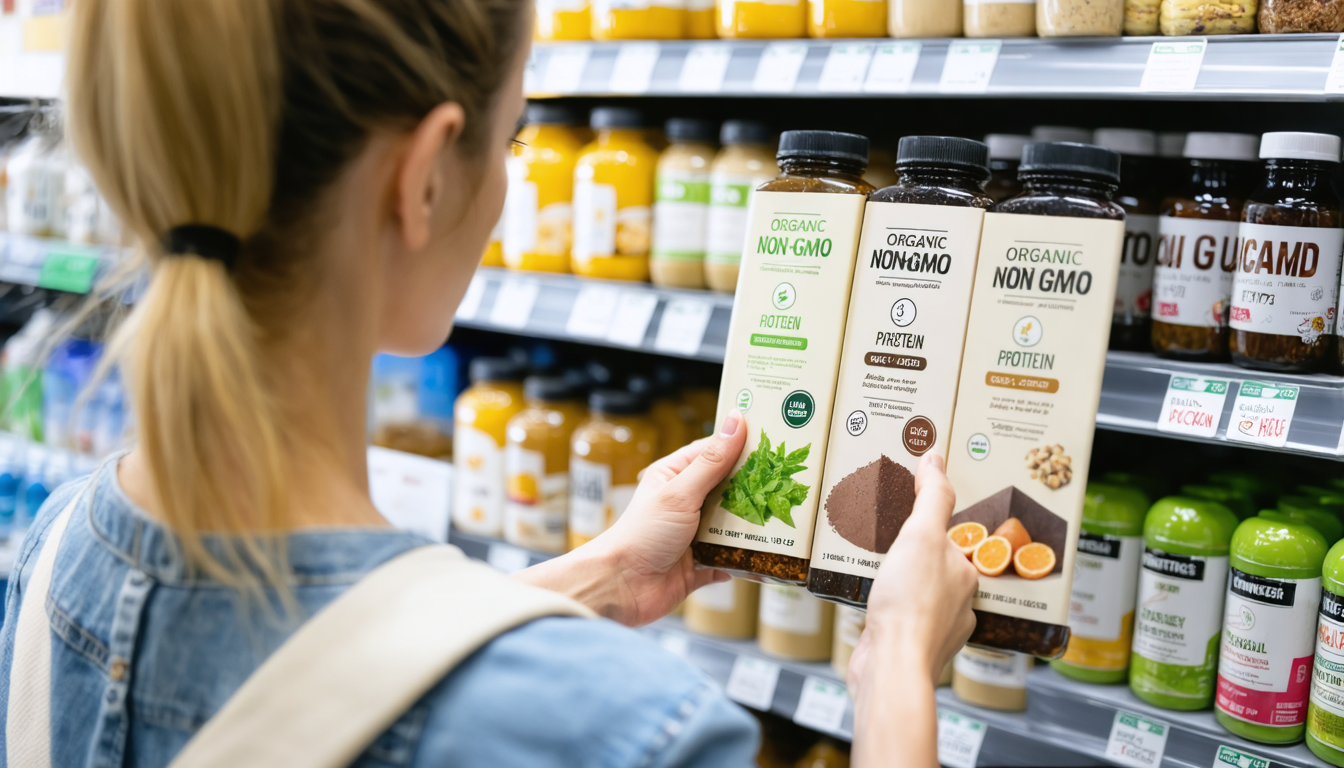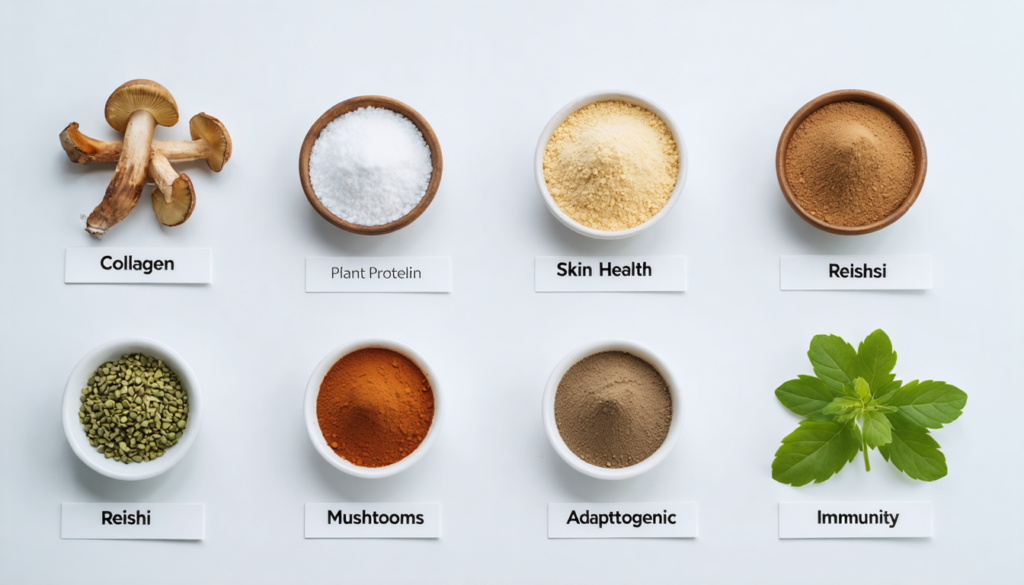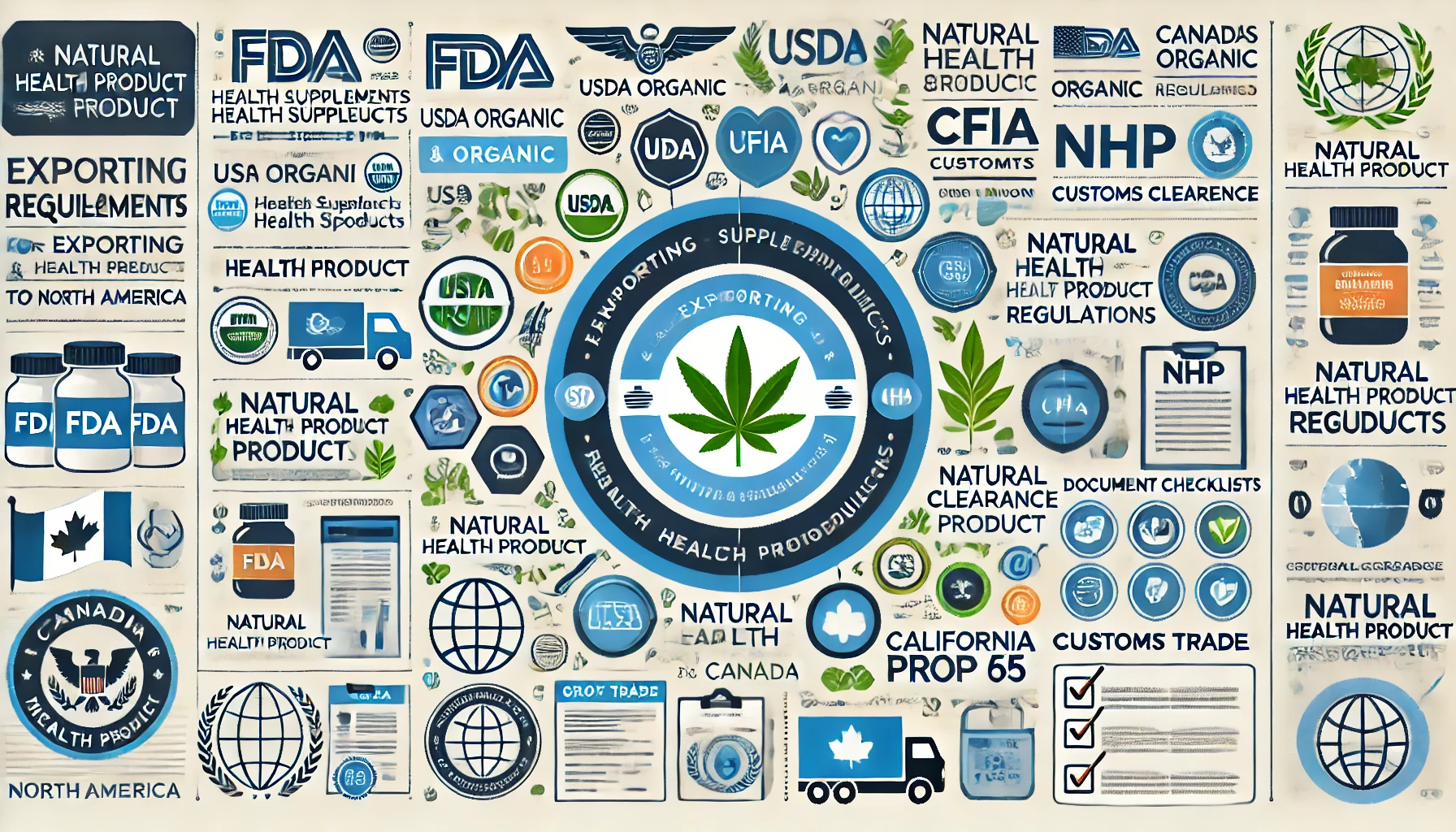Selecting the right ingredients for functional foods and supplements is crucial for creating products that meet consumer demands while ensuring safety and efficacy. With the growing market for wellness products, knowing how to source high-quality, effective ingredients can set your brand apart.
Choosing the right ingredients involves understanding market trends, ensuring quality control, and adhering to regulatory standards. Ingredients like collagen, medicinal mushrooms, and plant-based proteins are trending for their proven health benefits. Manufacturers must prioritize sourcing from reputable suppliers, testing for purity and potency, and aligning with consumer preferences such as organic, non-GMO, and clean-label certifications.
Let’s explore the steps to selecting functional food ingredients, from identifying popular trends to ensuring compliance with global standards.
What Are the Key Trends in Functional Food Ingredients?
Sub-heading leading paragraph:
Understanding current ingredient trends helps manufacturers stay ahead in the competitive functional food market.

Functional food ingredients are increasingly focused on consumer demands for natural, sustainable, and science-backed health benefits. Here are some of the most popular categories:
1. Collagen for Skin and Joint Health
Collagen, particularly from marine or bovine sources, is sought after for its benefits in skin elasticity and joint support. It has a proven market demand, especially in the beauty and aging demographics.
2. Medicinal Mushrooms
Mushrooms like Reishi, Lion’s Mane, and Chaga are known for their immune-boosting and cognitive-enhancing properties. They are widely used in supplements, teas, and coffee blends.
3. Plant-Based Proteins
With the rise of veganism and sustainability concerns, plant proteins from sources like peas, rice, and hemp are trending as eco-friendly, nutritious alternatives to animal proteins.
4. Adaptogens
Ingredients like ashwagandha and ginseng, which help the body manage stress, are gaining traction as consumers focus on mental wellness.
Table: Top Trending Functional Food Ingredients
| Ingredient | Health Benefit | Popular Form | Consumer Appeal |
|---|---|---|---|
| Collagen | Skin, joint, and bone health | Powders, beverages, capsules | Beauty, anti-aging |
| Medicinal Mushrooms | Immune and cognitive support | Powders, teas, supplements | Natural and holistic health |
| Plant Proteins | Sustainable nutrition, weight loss | Powders, bars, ready-to-drink | Vegan, eco-friendly |
| Adaptogens | Stress relief, energy enhancement | Capsules, teas, tinctures | Mental wellness |
How to Ensure Ingredient Quality and Safety?
Quality and safety are non-negotiable when sourcing functional food ingredients.

Ensuring ingredient quality involves rigorous testing, certifications, and traceability. Key practices include:
1. Comprehensive Testing
- Test for purity (e.g., heavy metals, pesticide residues) and potency to confirm active ingredients meet required levels.
- Perform microbial testing to ensure products are free from harmful bacteria like E. coli or Salmonella.
2. Supplier Audits
- Work only with suppliers who can provide documentation such as GMP certification or organic certifications.
- Conduct regular audits of suppliers to verify compliance with regulatory standards.
3. Certifications to Look For
Certifications like USDA Organic, Non-GMO Project Verified, or ISO 22000 demonstrate ingredient credibility and safety.
4. Technology in Traceability
Digital tools such as blockchain can help trace the ingredient journey from farm to factory, ensuring full transparency and trust.
Table: Key Quality Control Practices
| Practice | Purpose | Benefit |
|---|---|---|
| Purity Testing | Identify and eliminate contaminants | Ensure product safety |
| Potency Testing | Verify active ingredient levels | Maintain product efficacy |
| Supplier Audits | Ensure compliance with regulations | Build trust with reliable partners |
| Certifications | Demonstrate ingredient credibility | Appeal to health-conscious buyers |
How to Align Ingredient Selection with Consumer Preferences?
Today’s consumers prioritize health benefits, sustainability, and transparency when choosing functional foods.

Aligning with consumer preferences ensures your product resonates with your target audience. Here’s how:
1. Focus on Clean Labels
Consumers prefer products with minimal processing and no artificial additives. Ingredients should be easy to recognize and understand.
2. Offer Sustainable Options
Ingredients sourced sustainably, like plant-based proteins, are highly appealing to eco-conscious consumers. Highlight certifications like Fair Trade or Rainforest Alliance Certified on packaging.
3. Address Specific Health Needs
Tailor your ingredient choices to address popular health concerns like stress, digestion, or immunity. For example, adaptogens for mental wellness or probiotics for gut health.
4. Transparency Through Technology
Provide QR codes on packaging that link to detailed ingredient sourcing information. This increases trust and engages consumers.
How to Stay Compliant with Global Regulatory Standards?
Navigating the regulatory landscape is essential for selling functional foods internationally.

Compliance with global standards ensures your product can enter multiple markets without legal or safety issues.
1. Know the Key Regulations
- U.S. (FDA): Requires adherence to dietary supplement GMPs, accurate labeling, and safety testing for contaminants.
- EU (EFSA): Emphasizes health claim substantiation and strict ingredient approvals.
2. Get the Right Certifications
Certifications like GMP, Halal, and Kosher can open doors to niche markets while ensuring compliance with local requirements.
3. Work with Experts
Partnering with regulatory consultants or leveraging AI tools can simplify the process of meeting global compliance standards.
Conclusion
Selecting the right ingredients for functional foods requires a balance of market awareness, quality assurance, and regulatory compliance. By focusing on trending ingredients, ensuring safety, aligning with consumer demands, and navigating global standards, manufacturers can create products that stand out in the competitive wellness industry.









